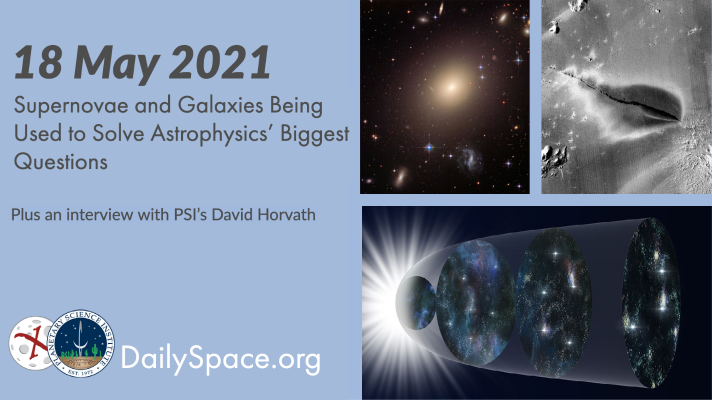
May 19, 2021 | Black Holes (Stellar), Daily Space, Dark Matter, Galaxies, Gemini North, Guest Interview, Mars, Neptune, Physics, Stars, Supermassive Black Holes, Uranus
Two new studies are attempting to solve a couple of big puzzles in astrophysics: Is the Hubble constant actually constant? And why do galaxies have flat rotation curves? Plus, a young star’s circumstellar disk, the search for stellar-mass black holes, magnesium in the deep waters of Neptune and Uranus, and an interview with PSI scientist David Horvath regarding possibly active volcanism on Mars.
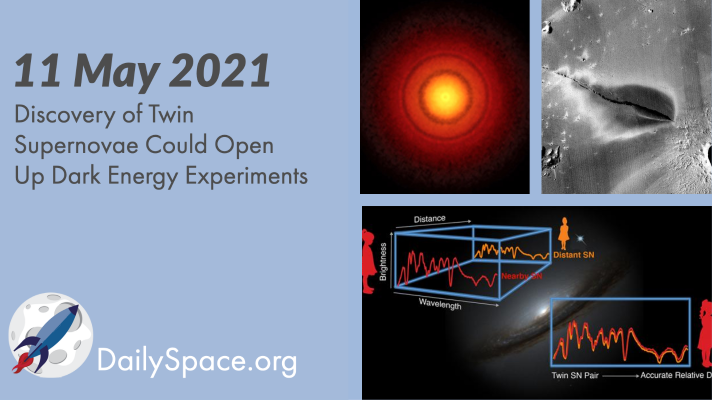
May 12, 2021 | Asteroids, Daily Space, Exoplanets, Galaxies, Mars, OSIRIS-REx, Planets, Star Forming Region, Supernovae, Voyager I & II
Researchers found that among about 50 supernovae, many had nearly identical spectra, paving the way for making more accurate distance calculations. These calculations, in turn, open up the possibility of using supernovae to better search for dark energy. Plus, OSIRIS-REx, Voyager I, planetary formation, and volcanoes on Mars.

May 7, 2021 | Active Galaxies, Earth, Exoplanets, Moon, Spacecraft, Star Forming Region, Supernovae, Very Large Array
Researchers find that the “oddball supernova” of a curiously cool, yellow star was lacking the hydrogen content expected, “stretching what is physically possible.” Plus, finding potentially habitable planets, a gamma-ray burst, ash clouds, and a new lunar map in this week’s What’s Up.
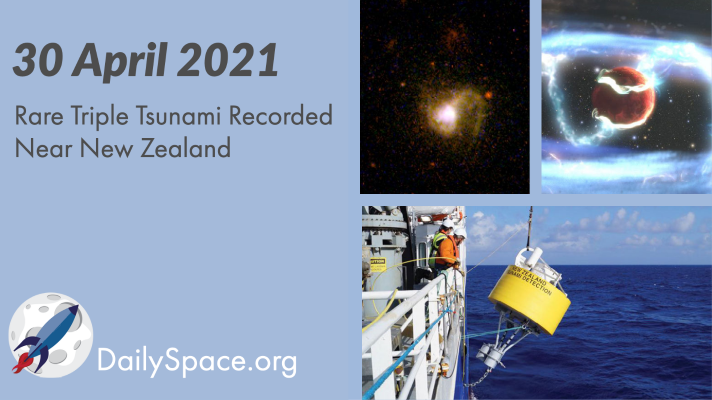
May 3, 2021 | Astrobiology, Daily Space, Earth, Exoplanets, Galaxies, Mars, The Sun, Venus
On March 5, 2021, three separate, large earthquakes occurred within hours of each other near New Zealand, and all three produced a tsunami. The resulting changes in wave height were recorded with special buoys. Plus, a radar blackout at Mars, a giant planet growing, small galaxies in the early Universe, and what even is a day?
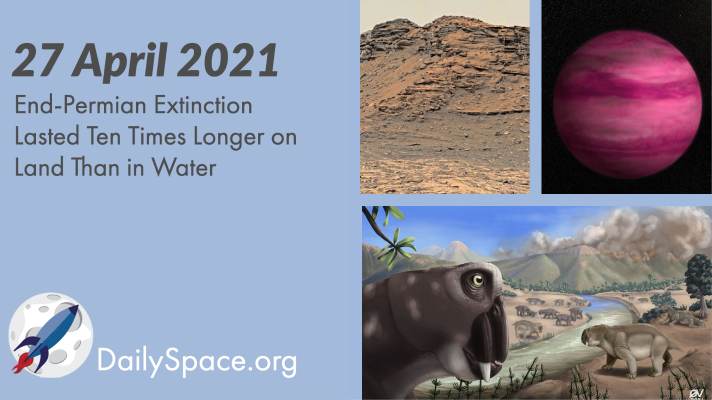
Apr 29, 2021 | Astrobiology, Climate Change, Cosmology, Curiosity, Daily Space, Dark Matter, Earth, Mars, Moon, Space History, Stars, Supermassive Black Holes
The biggest mass extinction event on Earth occurred at the end of the Permian period, resulting in the extinction of 95% of marine life and 80% of terrestrial life. Now, scientists have found that the terrestrial portion of the event lasted nearly ten times as long as the ocean version. Plus, a spaghettified star, the search for Moon Trees, all about Mars, and new works on dark matter and dark energy.
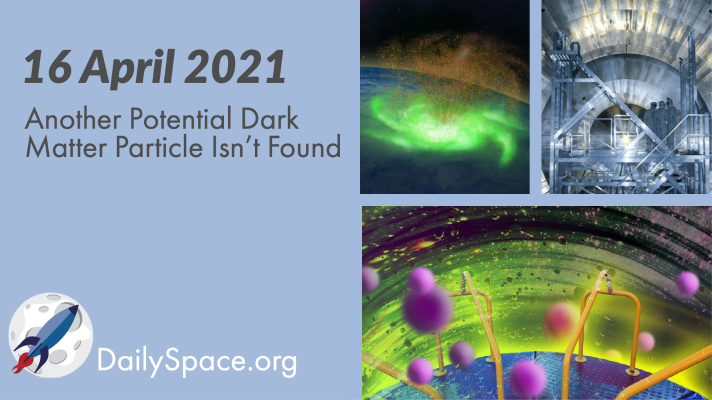
Apr 20, 2021 | Cosmology, Dark Matter, Earth, Galaxies, Physics, Supermassive Black Holes
Researchers looked for a slowdown in black hole rotational speeds due to the collection of ultralight bosons, but they found nothing, eliminating the hypothetical particle from the list of possible dark matter particles. Plus, neutrino hunting, neutron stars, a space hurricane, and our review of some delightfully nerdy apparel.








 We record most shows live, on Twitch. Follow us today to get alerts when we go live.
We record most shows live, on Twitch. Follow us today to get alerts when we go live.